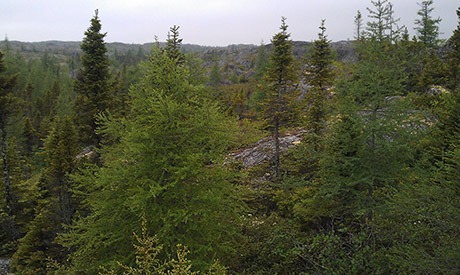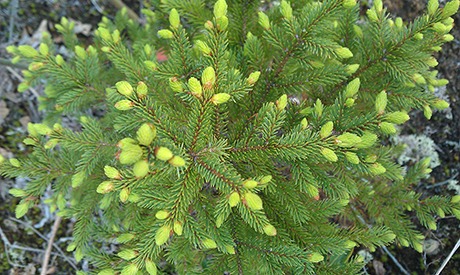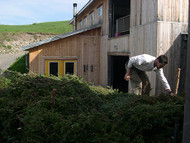Wildcrafted Vs. Organic Essential Oils
Apr 21st 2021
Posted by Stephanie Chambers
by Stephanie Chambers and Dr. Christoph Streicher

In recent years, Organic food has become very mainstream. Given the extent of chemicals that are used to conventionally farm foods, that is hardly surprising. People also like the fact that there are certifying bodies that check that the foods really are farmed in an Organic way.
But, when it comes to deciding whether Organic Essential Oils are better than Wildcrafted ones, there is more to consider.
The first major factor to consider is that generally, Organic plants are grown in a monoculture. This is very different to the way in which they are grown in the wild. Just as people are now discovering the value of “shade grown coffee” as opposed to coffee grown the normal way, there are many factors that organically grown herbs may not be taking into account. It could potentially even effect the potency of the Essential Oil being produced.

The production of Organic herbs has become an industry. It isn’t like the old days, when we would grow Organic veggies in our backyards using companion planting, planting marigolds to repel insects, and so on. When plants are grown organically nowadays, they are generally grown in defined rows so that tractors can mow down the weeds between the rows. This, of course, makes sense.
But, as with any industry where large amounts of money are being generated, we can’t be sure that the things they are using now to control pests won't be added to lists of those banned from Organic production later.
A story may help illustrate this. One of my girlfriends and her husband started growing bananas organically. They didn’t do it because they believed in the principles of Organic farming – they did it because Organic bananas were fetching a higher price.
They would be fined if they didn’t deal with weeds, so they and their children spent many hours whipper-snippering the weeds. They were growing them in an area where it was cold, so the bananas had to be grown on slopes, and they couldn’t use tractors to cut the weeds.
Recently, their children left home, so they had no free labor to help deal with the weeds. So, they went back to growing bananas with chemicals. I was horrified when I heard this. But that’s the reality. For many, growing organically is just a commercial decision, not one of the heart.
Of course, wildcrafted Essential Oils have their downsides too. For example, if not properly regulated, suppliers could be taking too many plants from native forests and could, potentially, leave it devastated. There is always a fine line when it comes to sustainable harvesting.
Of course, Ayurveda adds another level of complexity. It says that for maximum potency, the herbs that the Essential Oils are made from should be harvested at certain times of the day and lunar cycle (ideally with certain Vedic sounds being played during the harvest). However, few modern day suppliers will go to that level of tradition.
The Good News is That You Don't have to Choose!
Many of Amrita Aromatherapy's USDA Certified Organic Essential Oils are from Wildcrafted sources. They were Wildcrafted to begin with and then they applied for Organic certification.
Here is a list of those that are also Wildcrafted:
- Balsam Fir from Canada (pictured)
- Bay Laurel from Croatia
- Black Spruce from Canada (pictured)
- Atlas Cedarwood from Morocco
- Cedar, Himalayan from Nepal
- Chamomile, Blue Morocco from Morocco
- Cistus (Rockrose) from Portugal
- Eucalyptus Citriodora from Madagascar
- Eucalyptus Radiata from South Africa
- Eucalyptus Staigeriana from Brazil
- Frankincense from India
- Helichrysum Serotinum from Italy
- Hyssop Cineol 1.8 from Spain
- Inula from Corsica
- Juniper Alpine from France
- Juniper Berry from Croatia
- Marjoram Spanish from Spain
- Niaouli from Madagascar
- Ravintsara from Madagascar
- Rosemary Borneol from Spain
- Rosemary Cineol 1.8 from Tunisia
- Sage from Bosnia
- Sage, Spanish from Spain
- Sandalwood from Australia
- Sandalwood Tamil Nadu from India
- Spikenard (Nardo) from Nepal
- Tea Tree from South Africa
- Thyme Borneol from Morocco
- Thyme Red from Spain
- Vitex from Albania
- Wintergreen from Nepal.
Disclaimer: *The statements made on this page have not been evaluated by the U.S. Food and Drug Administration (FDA). They are not intended to diagnose, cure or prevent any disease. If a condition persists, please contact your physician or healthcare provider. The information provided is not a substitute for a face-to-face consultation with a healthcare provider, and should not be construed as medical advice.
Original Published: 2016-02-10 / Last Modified: 2025-5-29

